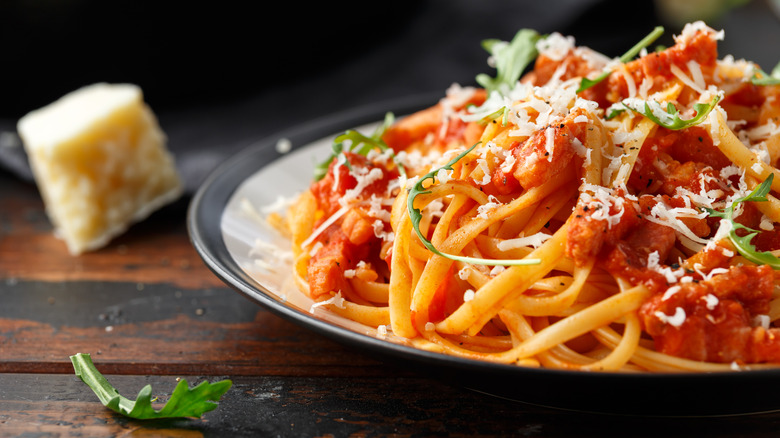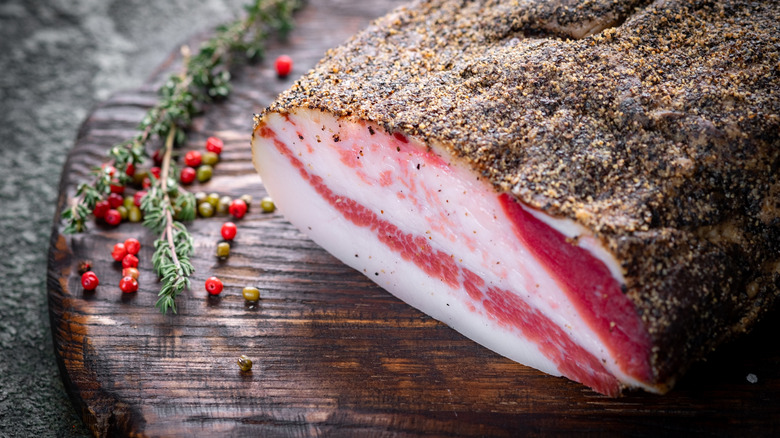The Best Way To Cook Pork For Delicious Amatriciana
Sharing the simple, minimal-ingredient style of related Italian pastas like carbonara and cacio e pepe, pasta all'amatriciana is built around getting the most flavor from just a few sources. Unlike the other two, amatriciana is a tomato sauce, but beyond that, its only other main ingredients are Pecorino Romano and guanciale, a cured pork product similar to pancetta. While all three are important, it's the guanciale that makes this more than just standard tomato sauce, bringing a unique, fatty flavor and bits of crispy pork for texture. That means getting the pork just right is the key to great amatriciana.
Normally you would start amatriciana by cooking the guanciale in the pan with a little oil to render the fat, but there is a better way to get going. Instead of browning the pork with high heat and oil, pour a little water in the pan to simmer it. Cooking the guanciale in water helps break it down and make it more tender, avoiding tough nubs of fatty pork. You only need a half cup of water — just enough to cover the bottom of the pan. Simmer the pork until the water evaporates completely and the only liquid left is rendered fat, and then finish browning the pork in its own fat for great flavor without the danger of overcooking.
Water for a more tender meat
While guanciale will bring plenty of welcome salt and spices to amatriciana, its abundance of fat is what makes it stand out compared to other cured meats, and cooking it in water is the best option. The normal process of browning from hot oil renders fat fine, but you only get so much before you start overcooking and potentially burning the meat. Water, however, prevents the reaction that causes proteins to brown, allowing you to cook the guanciale longer and provide more fat before it starts to get golden. Guanciale also has tougher fat than other cuts of cured meat, so giving it more time to fully break down will not just produce a more delicious sauce, but also a more tender meat.
When you are trying to render fat that's still attached to meat, like guanciale, water is also going to apply a more evenly distributed heat. So those small matchsticks of guanciale aren't just frying on the bottom, the whole piece is getting in on the action. The fat of guanciale isn't just essential to the flavor of amatriciana, but also the smoother consistency of the sauce, so all that extra rendering from the water does make a big difference. You get pasta where every bite is rich and infused with pork flavor, not just the chunks of guanciale themselves. That's what truly good amatriciana is all about.

